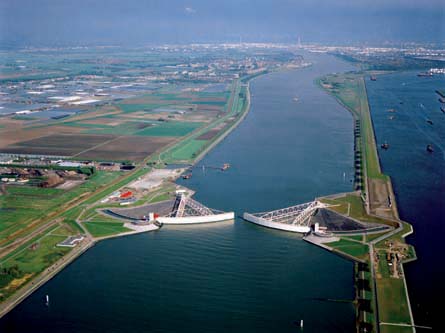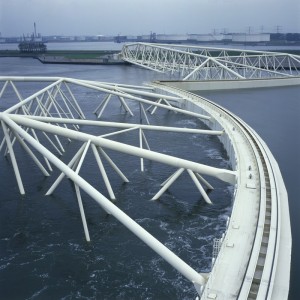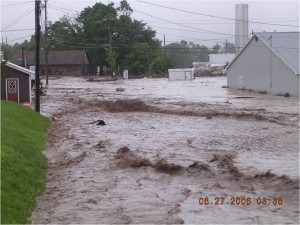
Imminent National Security Threat: Climate Change & Flood Risk
Climate Change is increasingly recognized as a direct national security threat. Rising greenhouse gas emissions contribute to an increasing frequency and severity of floods, droughts, wildfires, and hurricanes. The damage of these disasters is vast. Swiss Re estimated the property damage of Hurricane Sandy at $ 70 billion and of Hurricane Katrina at $ 135 billion. Flood risk mostly threatens U.S. coastal counties, where 16% of total U.S. property value is located. In dealing with this challenge, the U.S. could look at the Netherlands, a country that has long dealt with flood risk control.
Water management in the Netherlands – Dike Rings
The Netherlands is a densely populated country with 16.7 million inhabitants of which 9 million live below sea level. The below sea level sections of the country are divided into so called ‘dike ring areas,’ which are separate administrative units that are protected by a set of primary sea defense systems. For each ring, national legislation demands that specific flood safety norms are implemented. These norms range from 1 flood per 1,250 years to 1 flood per 10,000 years and are chosen based on the quantification of damage to property, production and human life.
For determining the necessary dike heights, innovative calculation models are used. One of them, awarded with the Edelman Award, uses operations research techniques to determine the most efficient limits and resulted in the Dutch government saving 7.8 billion Euros.
Water management in the Netherlands – Delta Works
Important in the Netherlands’ flood safety infrastructure are the ‘Delta Works’. This is a series of constructions consisting of dams, sluices, locks, dikes, levees and storm surge barriers. The aim of these works is to shorten the Dutch coastline and hence to reduce the length of dikes that have to be heightened and strengthened.
A vital point of success is the use of storm surge barriers, which are a long collection of valves that can be closed during storm surges. These have the major advantage of protecting large areas without requiring destruction of buildings along the way.
The challenges of flood control in the U.S.
With over 50% of the U.S. population living in counties with levees and with a seemingly inadequate American catastrophe probability standard of 1% per year (a 100-year norm), flood risk poses a significant treat to millions of Americans. The National Committee on Levee Safety, established by Congress after Hurricane Katrina, reported disturbing findings that the precise location and protection levels of the over 14,000 miles of federal levees and over 100,000 miles of non-federal levees across the United States are largely unknown. Moreover, the effects of levee breaches are also uncertain because the government has not mapped a vast quantity of flood plans.
The Megaregions approach
In establishing new policy, responsible officials should tackle the problem from the perspective of Megaregions that form the core of the American economy. One example is the Bos-Wash corridor, which stretches 500 miles down the East Coast from Boston, through New York to Washington D.C. It has a population of 54.3 million, 18 percent of all Americans, and an economy of $2.2 trillion. Looking through this lens creates a much higher sense of urgency and legitimacy to better defend the Megaregions against floods.
Integrated Flood Control solutions
The U.S. government should consider implementing more integrated solutions that bring together all stakeholders and relevant fields. Over the last decades, this approach was successfully developed in the Netherlands where traditional fields of spatial planning, urban development and hydraulic engineering were combined to address the broad climate change challenge both on a local and system-wide level. One such successful project led to the development of smart monitoring technologies, which enable continuous testing and inspection of dikes and help to prevent levee breaches cost effectively. It was developed by a consortium of government and private sector actors.
Coastal flooding is a major threat for the U.S. and should be taken more seriously. Implementing cost effective measures should become a national security priority. Countries like the Netherlands have already championed rational and integrated solutions, which the U.S. government can use to better protect its citizens.
Kareem Chin is an Adjunct Junior Fellow at the American Security Project, a non-partisan think tank devoted to studying questions of America’s long-term national security. He is a master’s candidate in CEMS International Management at the Rotterdam School of Management, Erasmus University in the Netherlands, and in Military Strategic Studies at the Netherlands Defense Academy.







